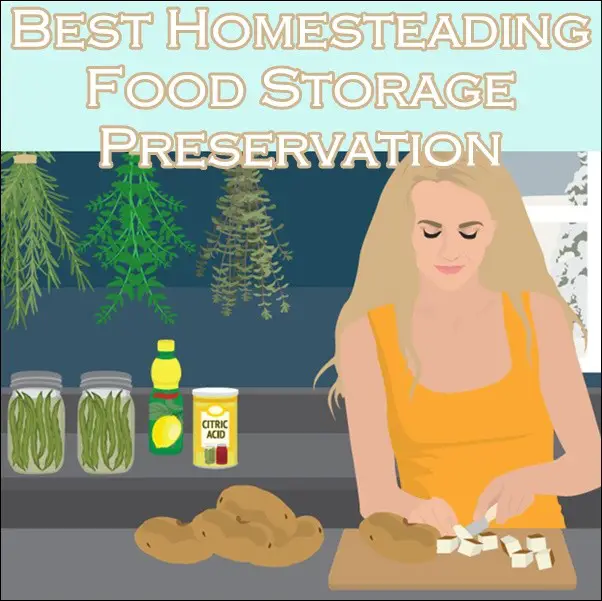Here are some of the best homesteading food storage preservation methods including canning, drying, root cellar and freezing.

Make sure you like The Homestead Survival on Facebook, Shop on AMAZON with Us and explore our PINTEREST BOARDS for innovative ways you can become self-sufficient on a budget.
If you have been growing your own produce in your garden and are enjoying the bounties of the seasons, you may suddenly notice that your plants are producing more than you can eat while it’s fresh. This is a good problem to have, but it’s still a problem. How can you use this much food without giving away the majority of it? A person can only eat so many tomatoes each day!
Of course, the traditional food preservation methods remind us that there are wonderful techniques to keep food edible through the long seasons, and interestingly enough these methods were all used in different ancient cultures, even ones that never met. It’s just proof that the ideas are perfect.
Even in our modern times, we can realize from these simple techniques that we don’t have to rely on expensive ice, plastic packaging, or chemical preservatives to keep the nutrition and taste in the food we produce.
Ways to Preserve Fresh Produce
When preserving fresh vegetables, fruits and herbs, it’s important to choose a method that works best for the type of food. Herbs in bunches work best when drying; root vegetables work best in a root cellar. Some, like onions and garlic, can be dried in bunches like an herb and will remain usable with no further effort. Let’s take a look at the different types of food preservation.
1. Root Cellaring: This is the simplest method for food preservation and works best for roots, as the name implies. Carrots, yams, potatoes, beets and garlic do well when root cellared. You can make a simple cellar by digging a hole in the ground large enough for a metal trash can.
Cut some holes in the bottom of the can and put rocks in the hole underneath the can. Fill the can with layers of straw or sawdust, alternating with your root vegetables. Make sure the vegetables are unbruised and clean.
2. Drying: Branches of herbs or bunches of garlic and onions can be hung on the walls or ceiling to dry in a room with low humidity and good air circulation. Fruits such as apples or persimmons can be cut into thin slices and dried in sunlight on a cookie sheet (turn daily to make sure there are no damp spots), or in an oven with the door left slightly open, on a very low setting.
3. Canning or Pickling: This method uses acid (vinegar or “brine”) to prevent bacteria from growing in the food. It is essential that every piece of equipment– cutting boards, pots, interior and exterior of jars, and your hands– be absolutely sterile. Placing filled jars in boiling water will cause a vacuum seal that preserves the food inside. Canned food can last months or years if kept properly.
4. Freezing: Although it requires a freezer, unlike the other methods, freezing can be the best way to preserve some vegetables like broccoli or asparagus. Make sure the veggies are dry and press all air out of the bags when sealing for freezing.
With careful planning and a little work, you can keep your food fresh for months and enjoy the taste of summertime even in the bleakest part of winter. Enjoy your garden’s bounty all year round!
Click here to read about some of the best homesteading food storage preservation methods:
https://www.fix.com/blog/food-preservation-methods/

